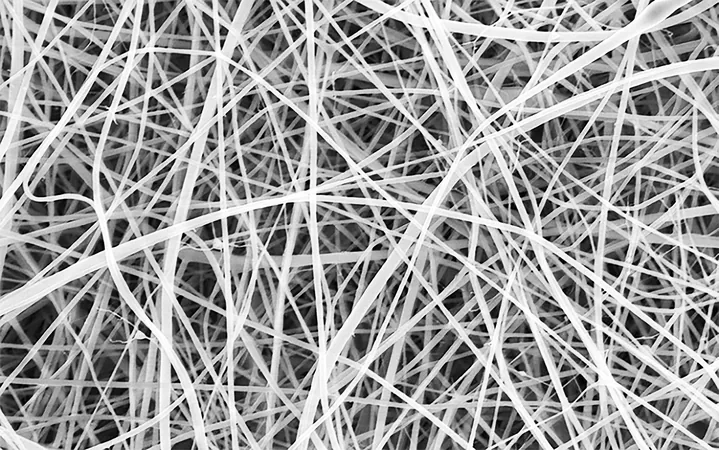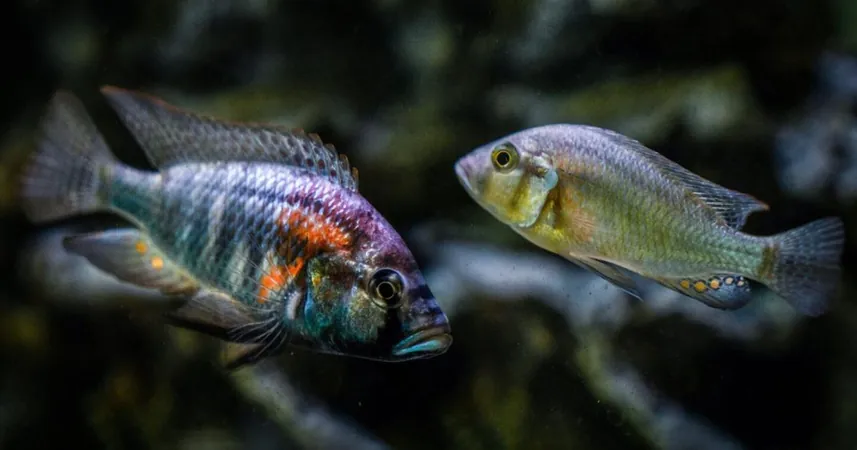
World's Thinnest 'Nanopasta' Breakthrough: Healing Wounds and Regenerating Tissues!
2024-11-24
Author: Wei Ling
World's Thinnest 'Nanopasta' Breakthrough: Healing Wounds and Regenerating Tissues!
In a fascinating convergence of culinary inspiration and scientific innovation, researchers have unveiled the world’s thinnest spaghetti-like strands, affectionately nicknamed "nanopasta." These extraordinary fibers, measuring a staggering 200 times thinner than a human hair, are not intended for your next Italian dish, but instead hold immense potential in medical applications, including wound healing and tissue regeneration.
A team from University College London (UCL) has spearheaded the development of these minuscule structures, with lead author Beatrice Britton emphasizing the unique fabrication method that combines basic cooking techniques with advanced science. “To make spaghetti, you traditionally push a mixture of water and flour through metal holes. We adapted this concept by pulling our flour mixture through with an electrical charge,” explained co-author Dr. Adam Clancy. This creative approach has birthed a groundbreaking material whose implications could go far beyond the kitchen.
The Healing Power of 'Nanopasta'
Utilizing starch as a primary ingredient, the researchers have discovered that these tiny strands form porous mats capable of allowing moisture to pass while simultaneously acting as a barrier against harmful bacteria. "Nanofibers like those made from starch hold promise for use in wound dressings due to their porous nature," stated Professor Gareth Williams from UCL School of Pharmacy. Furthermore, these fibers mimic the extracellular matrix—a natural network of proteins crucial for cellular support—making them ideal for scaffolding in tissue engineering.
Environmentally-Friendly Production
The traditional methods of nanofiber production involve significant environmental costs, particularly in terms of energy and water usage. In a pioneering move, the UCL researchers have shifted toward a more sustainable method by sourcing their nanofibers from readily available starch-rich flour. This inventive process not only conserves resources but also repurposes a common food ingredient for revolutionary scientific advancements.
Dr. Clancy elaborated, “Starch is an abundant, renewable, and biodegradable material—the second largest source of biomass on Earth after cellulose.” This attribute is critical, as the use of biodegradable materials can reduce the ecological footprint of medical supplies.
Addressing Challenges and Future Prospects
Creating these nanofibers, however, does present challenges. The presence of impurities like proteins can complicate the production process by increasing the viscosity of the mixture. The solution, as the researchers discovered, lies in utilizing formic acid instead of water, which helps break down the starch chains effectively. Controlled temperature during preparation is also essential to achieving the desired consistency.
As promising as this research looks, further investigation is needed to fully understand the characteristics of these nanofibers. “We’re eager to learn how quickly they disintegrate in the body, how they interact with cells, and if they can be produced on a larger scale,” Dr. Clancy mentioned.
The potential applications for these tiny fibers extend far beyond just medical uses. They could significantly impact fields like environmental engineering, particularly in developing biodegradable materials. However, for those dreaming of culinary innovation, Professor Williams aptly noted that “as pasta, sadly, it would overcook in less than a second,” putting an end to any thoughts of cooking this miraculous ‘spaghetti.'
A Glimpse into a Revolutionary Future
The world’s thinnest "spaghetti" exemplifies the ingenuity of modern materials science and serves as a placeholder for future explorations in nanotechnology. With the scientific community's focus on both enhancing the properties of these nanofibers and refining their production processes, we may soon witness practical applications that not only heal but also pave the way for sustainable advancements in various industries. Keep an eye out, as this might just be the beginning of a spiraling innovation revolution!




 Brasil (PT)
Brasil (PT)
 Canada (EN)
Canada (EN)
 Chile (ES)
Chile (ES)
 España (ES)
España (ES)
 France (FR)
France (FR)
 Hong Kong (EN)
Hong Kong (EN)
 Italia (IT)
Italia (IT)
 日本 (JA)
日本 (JA)
 Magyarország (HU)
Magyarország (HU)
 Norge (NO)
Norge (NO)
 Polska (PL)
Polska (PL)
 Schweiz (DE)
Schweiz (DE)
 Singapore (EN)
Singapore (EN)
 Sverige (SV)
Sverige (SV)
 Suomi (FI)
Suomi (FI)
 Türkiye (TR)
Türkiye (TR)